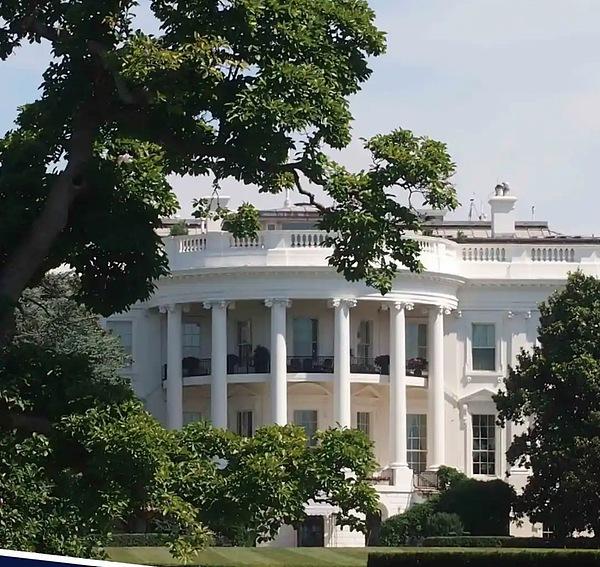Written by: XiaoHai
This article aims to explore the theoretical upper limit of Ethereum's evolution from a "world computer" to a "foundation of civilization".
We believe that Ethereum's ultimate value lies in its role as the social operating system of a "computational civilization"—a programmable foundational layer that carries core elements of civilization such as wealth, identity, contracts, and governance.
By analyzing its technological, institutional, and cultural foundations of legitimacy, this paper systematically demonstrates Ethereum's potential to become the foundation of civilization. Furthermore, it explores the theoretical boundaries of its development from four dimensions: technology, economy, governance, and society, ultimately depicting the ultimate form of "Ethereum Civilization" defined by physical limits, UBI, competitive sovereignty, and human-machine co-governance.
The study argues that Ethereum's upper limit is essentially the limit of the complexity, coordination, and secure evolution capabilities that human social order can achieve on a programmable and verifiable foundation. For the first time, it provides a "meta-framework" for civilization to evolve securely.
Keywords: Ethereum; social operating system; trust neutrality; UBI; contestable sovereignty; civilization framework; metaverse foundation layer
01 Introduction: A Paradigm Shift from "Trust Machines" to "Social Operating Systems"
1. In our first paper, "Taming the Leviathan," we proposed a governance paradigm of "reversible delegation," arguing that the legitimacy of power stems from its revocability and revealing the important role of DAOs in governance practice. This paper further explores: What role will Ethereum play when on-chain economic density and institutional complexity surpass off-chain complexity?
Ethereum's narrative is undergoing a profound paradigm shift, evolving from a "protocol layer" focused on performing computations to a "social operating system" supporting complex social collaboration. Its theoretical upper limit is no longer defined by micro-indicators such as transaction throughput (TPS) or gas fees, but rather by the institutional complexity, social scalability, and civilizational adaptability it can support as the foundation of civilization.
More importantly, Ethereum has effectively become the foundational layer of humanity's scientific imagination's "metaverse." All functional modules and ecological collaborations within this metaverse must be built upon Ethereum; it represents the first attempt in human history to systematically reconstruct another parallel universe. Therefore, the core question of this article is: Is Ethereum's theoretical upper limit the limit of its technical parameters, or the limit of the complexity of civilization that humanity can build upon a programmable foundation?
02 Pillars of Legitimacy: Ethereum as the Triple Cornerstone of Civilization
For a system to support civilization, it must pass the rigorous test of legitimacy. Ethereum's non-fungibility stems from the solid foundation it has built on in the following three dimensions.
2.1 Technological Legitimacy: Uncompromising Security and Trust Neutrality
With over 1.06 million active validator nodes globally and more than 34 million ETH locked in its consensus system, the cost of attack far outweighs any potential gain, creating absolute security in the sense of "economies of physics." Continuous technological advancements greatly enhance Ethereum's scalability, providing the technical support for hosting large-scale applications.
Quantum resistance and long-term security planning ensure that Ethereum can maintain long-term security in an environment of rapid technological iteration, providing a sustainable guarantee for its role as a civilization infrastructure.
More importantly, the rules of the protocol are enforced by code rather than human will. This neutrality of "code is law" is the prerequisite for attracting diverse global entities to gather and collaborate here, and it is also a moat that other high-performance chains that compromise on decentralization cannot reach.
2.2 Institutional Legitimacy: Programmable Social Contracts and "Institutional Lego"
Ethereum's institutional legitimacy is reflected in its interaction with the traditional governance system and the maturation of its internal governance mechanisms, which is the institutional guarantee for its role as the foundation of civilization.
Ethereum's core value lies in transforming abstract social institutions (such as corporate law, contract law, and governance charters) into composable and verifiable smart contracts, thereby forming a programmable "social operating system".
As real-world assets (RWA) are gradually put on the blockchain, a deeper process based on the blockchain process of real-world assets is unfolding—RWO (Real-World Organization).
The on-chain implementation of RWO signifies that the system itself has become a composable "on-chain Lego" – identity, power, decision-making, finance, and audit modules can be freely invoked, forked, and recombined.
When the institutional structure of human society enters the "three-body" evolutionary stage where "trial and error costs approach zero and iteration speed is near real-time," the institutional legitimacy of Ethereum will be ultimately established.
2.3 Cultural Legitimacy: The Genes of Public Spirit and Positive-Sum Game Theory
Ethereum's core values include decentralization, censorship resistance, transparency, and security. The global dissemination of these values has transformed Ethereum from a technological platform into a cultural symbol and value system, providing a cultural foundation for its role as a cornerstone of civilization.
The Ethereum community has evolved into a global and diverse network, encompassing participants from diverse backgrounds, including technology developers, financial innovators, artists, and social activists.
The Ethereum community culture is deeply rooted in anti-zero-sum and positive-sum genes. This public spirit that transcends short-term interests is the "soft power" that unites global cooperation, enabling Ethereum to transcend the realm of pure technology and become a global community with shared values.
03 Exploring Boundaries: The Evolutionary Path from Technological Limitations to Civilizational Expansion
Based on the aforementioned legitimacy, Ethereum's development will reach its theoretical upper limit in four dimensions. These boundaries together outline the contours of "Ethereum civilization" and define the core constraints of the metaverse construction.
3.1 Technological Boundaries: From Scaling Challenges to the Exploration of Infinite Computing
Scaling up is a core path for Ethereum to break through technological boundaries. The prosperity of the Layer 2 ecosystem and the continuous increase in Blob capacity are important ways for Ethereum to break through technological boundaries.
According to the Ethereum Foundation's long-term technology plan, Ethereum will continue to push technological boundaries in the foreseeable future, providing technical support for its role as a civilization's infrastructure. With its modular architecture, its computing power can theoretically be scaled to support global applications.
However, the physical speed of light will become the absolute boundary for consensus synchronization. As human civilization ventures into interplanetary space, interplanetary communication delays will force the unified Ethereum network to split into multiple relatively independent "consensus autonomous regions," forming civilization partitions based on physical distance.
3.2 Economic Boundaries: From Productive Capital to the UBI System
Vitalik Buterin once said that "low-risk decentralized finance (DeFi) is to Ethereum what search is to Google," maintaining Ethereum's minimum value. This is Ethereum's floor.
With the continued development of Real-World Assets (RWA) + Real-World Organizations on-chain (RWO) and Decentralized Physical Infrastructure Network (DePIN), when the density of the on-chain economy and the complexity of the institutions exceed those off-chain, the economic ceiling of Ethereum will no longer be defined by Earth's GDP or market size, but by the total complexity of computational civilization.
At that time, its economic scale may reach several orders of magnitude above the Earth's economy, becoming a "consensus economic universe" jointly operated by billions of humans and trillions of AI.
Under this system, the mechanisms for wealth creation and distribution will be restructured. The Global Basic Income (UBI) system will primarily consist of Node Dividends and Data Yields, with ETH evolving into the basic unit for measuring the energy of the entire "consensus economic universe." At this point, the essence of wealth is no longer the aggregation of assets in the traditional sense, but rather a function of a civilization's ability to coordinate complex activities. Therefore, Ethereum's economic ceiling is, in effect, an economic representation of the complexity of the civilization it can support.
3.3 Governance Boundaries: Competitive Sovereignty and Hierarchical Legal Order
Ethereum's governance boundaries are reflected in its evolution from being led by core developers to being governed by multiple stakeholders, which forms the basis of its governance as the foundation of civilization.
The Ethereum Foundation has introduced four strategic pillars—Acceleration, Amplification, Support, and Long-Term Unblocking—to support the development of the ecosystem. It also proposes the following two major visions:
To maximize the number of people who directly or indirectly use Ethereum and benefit from its underlying values;
Maximize the resilience of Ethereum's technology and social infrastructure.
Ethereum has developed a governance model involving multiple stakeholders, including developers, validators, users, businesses, and institutions. This diversified governance model better balances the interests of different groups, enabling Ethereum to better adapt to the needs of a complex ecosystem and providing governance guarantees for its role as a foundation of civilization.
The development of decentralized autonomous organizations (DAOs) is an important manifestation of the expansion of Ethereum's governance boundaries.
Based on SBT, a decentralized society (DeSoc) allows individuals to seamlessly transfer their biometrics (identity), abilities, behaviors, health, and wealth between different DAOs (which can be viewed as "digital city-states"). The role of real-world nations will gradually shift to that of "providers of public services in the physical world" (public health, law and order), while Ethereum will become a "transnational constitutional layer," establishing underlying rules such as "identity verification and asset protection." The governance of the entire planet will form a layered legal order of "real-world governance (nation/community) + on-chain governance (constitutional layer) + DAO governance (application layer)."
Thus, a new, competitive sovereignty system emerges: power gains legitimacy through competition, governance is optimized through migration, and institutions iterate through consensus. "Sovereignty competition" will become the driving force for the continuous evolution of future society, and the quality of governance will be determined by citizens' migration data in real time.
3.4 Social Boundaries: Human-Machine Co-governance and Consciousness Community Network
Ethereum's social boundaries are reflected in its evolution from an experiment by a few tech geeks to a social infrastructure with global public participation, which forms its social foundation as the basis of civilization.
Continuous optimization of the user experience is a key way for Ethereum to break through social boundaries, enabling it to attract more users from non-technical backgrounds and expand its social base.
Enhancing localization and cultural adaptability is a key strategy for Ethereum to break through social boundaries; it encourages developers and users in different regions to build applications and services based on local needs and cultural characteristics, enabling Ethereum to better integrate into different social environments and providing a cultural foundation for its role as a cornerstone of civilization.
Expanding education and knowledge dissemination is an important way for Ethereum to break through social boundaries, enabling it to cultivate a broader talent base and providing human resource support for its long-term development.
When the abundance and depth of human digital identities (through technologies such as SBT) and the on-chain activities of AI agents together constitute the mainstream of social interaction, Ethereum will evolve into a neutral "human-computer interaction field." Social governance will involve both humans and silicon-based intelligence with on-chain personalities, and the social form will ultimately evolve into a cross-species consciousness community, with coordinated intelligence becoming Ethereum's ultimate social function.
At this stage, Ethereum is no longer an extension of human society, but a new form of society itself—an operating system inhabited by humans and silicon-based intelligence.
In summary, the exploration of the boundaries between technology, economy, governance, and society ultimately converges into a qualitative leap—when the core elements of civilization are encoded on a programmable foundation, its evolutionary paradigm shifts from slow, friction-ridden, rigid iteration to agile, reversible, and flexible evolution. This signifies that a systematic error-correction capability becomes an intrinsic attribute of civilization.
In "The Beginning of Infinity," British physicist David Deutsch points out that when a civilization masters a systematic error-correction mechanism, its progress will no longer have an upper limit.
This ability to "infinitely correct" is precisely the source of civilization's continuous evolution. Ethereum is the technological realization of this error-correcting mechanism. On Ethereum, social institutions are no longer immutable codes, but updatable code; power is no longer a static monopoly, but reversible authorization; governance is no longer a one-off design, but a continuously iterative process. This "programmability of institutions" is essentially "the error-correcting nature of civilization." It allows society to enter a low-cost, high-frequency evolutionary operating mode, making the speed of institutional updates coincide with the speed of technological innovation for the first time.
When social contracts can be improved, copied, and forked like open-source software, humanity truly enters an "infinite beginning": a stage of civilization that does not aim for perfection but takes continuous error correction and evolution as its norm.
This marks a fundamental leap in human society: from irreversible to reversible, from power monopoly to power mobility, and from institutional closure to institutional openness.
Therefore, Ethereum's ceiling is not some static endpoint, but an "infinite beginning" that is perpetually activated—a civilizational process that is never capped, driven by programmable systems, revocable power, and iterative governance.
04 Ultimate Form: The Infinite Game as a Meta-Framework of Civilization
Ethereum's ultimate form is not any specific vision of civilization, but rather a meta-framework for a digital civilization—a foundational entity that allows countless forms of civilization to be safely born, compete, evolve, and perish. It does not define the ultimate goal of civilization, but rather provides the rules and fertile ground necessary for evolution.
4.1 Civilization Metaframework: Rules of an Infinite Game
Ethereum, as a meta-framework, is fundamentally about creating an arena for an infinite game. Within this arena, all participants are not engaged in a finite game with an end (such as winning an election or defeating an opponent), but rather in an infinite game designed to continue forever—the continuation and prosperity of civilization itself.
Programmable systems constitute the variable rules of the game, allowing social contracts to iterate at the speed of code, enabling low-cost trial and error and high-frequency evolution.
Credible and neutral enforcement ensures the fairness of the rules. All participants, regardless of their strength, interact under the same set of rules, which is a prerequisite for the game to continue.
Competitive sovereignty introduces a competitive mechanism of rules, allowing different DAOs (Digital City-States) to offer different governance models, cultural values, and economic systems. Individuals make choices by "voting with their feet," thereby driving the continuous optimization of the entire system.
Therefore, Ethereum's ceiling is not a quantifiable technical indicator, but rather the limit of complexity and coordination that a civilization can achieve after placing its core institutions on a programmable and verifiable foundation. Its limit is not the limit of computing power, but the limit of social coordinability. When a civilization's institutions can be updated like code, and values can be freely transferred through consensus, human society enters for the first time a computable, verifiable, and evolvable space of order—this is the true meaning of the "ceiling of civilization."
4.2 Metaverse: The First Instance of a Civilization Framework
This meta-framework of civilization is not a castle in the air; its first and most intuitive example is the metaverse in human science fiction. In fact, Ethereum has objectively become the only feasible foundational layer for constructing any truly meaningful metaverse.
The metaverse is not simply a "virtual game" or a "digital space," but rather a parallel universe that requires "unique and trustworthy identities, clear asset ownership, non-breachable contracts, and efficient and collaborative governance"—core requirements that are perfectly met by Ethereum's underlying system.
Decentralized identity (DID/SBT) ensures the uniqueness, trustworthiness, and autonomy of an identity;
Non-fungible tokens (NFTs/FTs) enable clear ownership and global liquidity of assets;
Smart contracts ensure that contracts cannot be breached and are automatically executed;
Decentralized Autonomous Organizations (DAOs) support collaborative, efficient, and reversible delegation of power in governance.
In other words, all functional modules and ecological collaborations of the metaverse must be built upon Ethereum or a similar trusted and neutral foundational layer. Any so-called "metaverse" detached from this foundational layer, no matter how dazzling its appearance, will ultimately fall into the trap of traditional internet platforms with monopolies or data silos, unable to become a true "parallel universe" where rights are fundamentally guaranteed and the economy can prosper freely. Therefore, Ethereum is not merely a framework for civilization; it is already the constitution and cornerstone of the metaverse.
05 Conclusion: From the Genesis Block to the Genesis Civilization
From its very first Genesis Block, Ethereum has embodied ambitions that transcend technology. This article systematically demonstrates its triple legitimacy, quadruple boundaries, and ultimate form as a social operating system.
When identity, wealth, and governance are fully migrated on-chain, Ethereum is no longer just a tool, but a "promised land of digital civilization." Here, we are not only users of code, but also creators who co-write the social contract of the future.
Vitalik's depiction of a "possible future" represents the path to technological realization, while the "ultimate form" revealed in this article represents the underlying rules of civilization's evolution. Ethereum has become the underlying protocol for all social experiments, its upper limit being a function of human collective wisdom and collaborative capabilities—an infinite game that never ends.
From the "Genesis Block" to the "genesis civilization," Ethereum's upper limit ultimately reflects our shared determination and imagination in choosing where we are headed. It not only embodies the evolution of a new technology but also represents humanity's first attempt to construct another universe in the digital realm; its boundaries are the horizon of human collaborative imagination.
Notes: 1. RWO, Real-World Organization, refers to the process of putting the identity, power, decision-making, finance, and auditing modules of a real-world organization (company, group, NGO) onto the blockchain in the form of smart contracts. 2. Node Dividend refers to the periodic revenue earned by nodes through resource contributions in consensus. 3. Data Yield refers to the revenue earned from exchanging personal data in the market.







